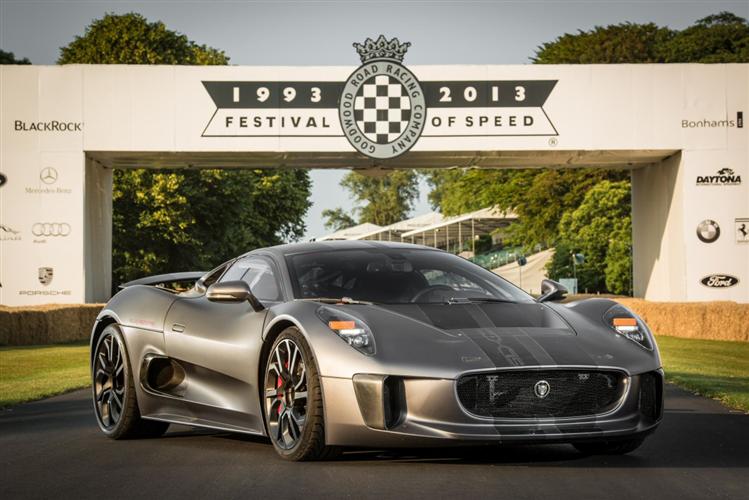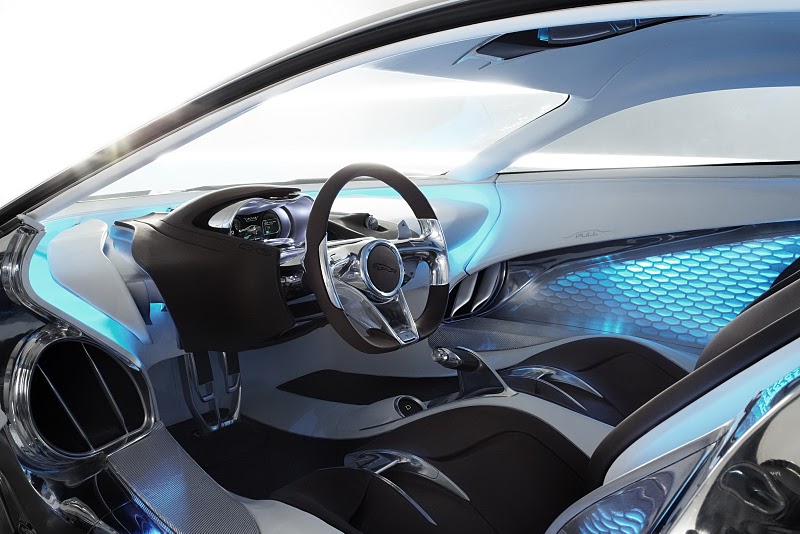
Jaguar has confirmed that the C-X75 supercar prototype won’t be put into production, but Goodwood visitors got a glimpse of what might have been, and saw the car in action.
The prototype is one of only five development and test cars, and made its public dynamic debut in the Michelin Supercar Run. Jaguar unveiled the C-X75 concept car in 2010. It has a four-wheel drive, plug-in hybrid powertrain and features Jaguar’s first carbon composite monocoque chassis.
In terms of performance, Jaguar C-X75 envisioned a goal of their future super car reaching 330 km/h (205 mph) and accelerating from 0 to 100 km/h (0 to 62 mph) in 3.4 seconds and 80 to 145 km/h (50 to 90 mph) in 2.3 seconds. It is powered by four 145 kW (194 hp) electric motors – one for each wheel – which produce 780 hp (582 kW) and a total torque output of 1,600 N·m (1,180 lbf·ft). Inherent in the drivetrain is the ability to independently vector torque to each wheel across the full speed range. Each motor weighs 50 kilograms (110 lb).

The micro gas turbines from Bladon Jets generate enough electricity to extend the range of the car to 900 km (559 mi) while producing 28 grams of CO2 per kilometre on the EU test cycle. While running solely on battery power, the C-X75 has an all-electric range of 110 km (68 mi). Among other advantages, the micro turbines used in the C-X75 can be run on a range of fuels including diesel, biofuels, compressed natural gas and liquid petroleum gas. The 15kWh lithium ion battery pack weighs 185 kilograms (410 lb). Jaguar estimates an average carbon emission of 28 g/km on European test cycle, however, the carbon emission is around 150g/km if the turbines are running.
The post Jaguar C-X75 Hybrid Supercar – Goodwood appeared first on YouFrisky.